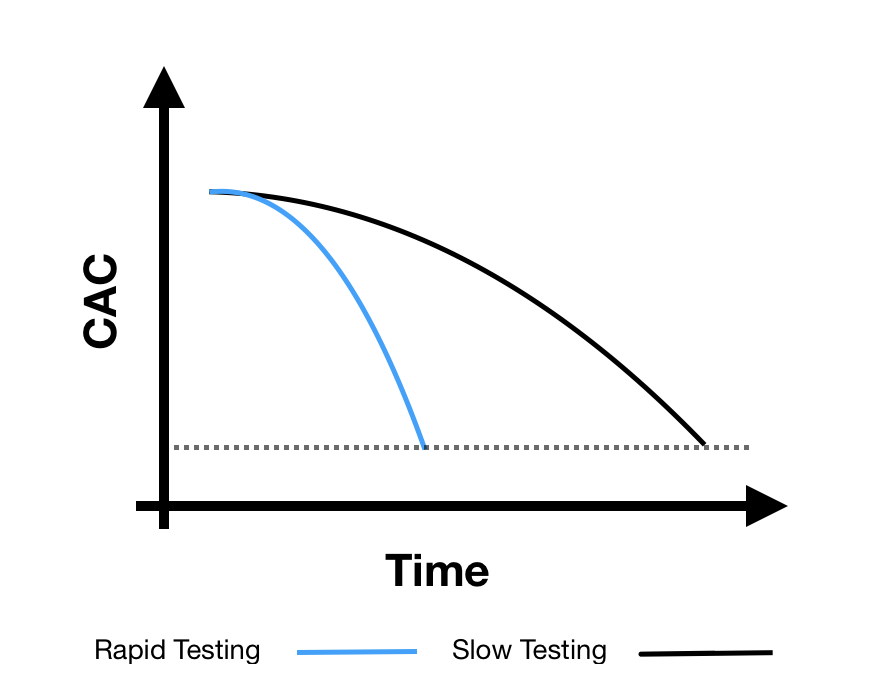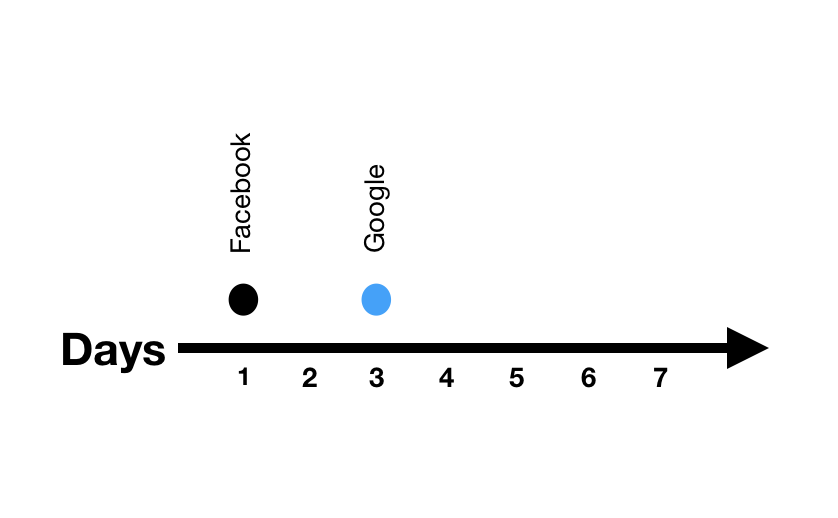Jonathan Martinez
More posts from Jonathan Martinez
Having spent time in the trenches with many startups, I’ve been lucky to see why many growth marketing engines don’t work correctly. I say I’m lucky because the issues I’ve seen have taught me an immense amount about what makes a well-oiled, polished growth marketing engine fire on all cylinders. My experience at Postmates taught me more through mistakes than triumphs, and I learned how to correctly scale a growth engine while marching us toward an exit.
A common thread of mistakes connects most startups that try their hand at growth marketing. Some frequent errors include performance metrics not being correctly measured, product and growth teams working in silos, low testing velocity and failure to consider the entire marketing funnel.
This is not to say that there aren’t unique problems at each startup. I’m only saying that there a few that are ubiquitous.
Low testing velocity
The day is far in the future when you’ll be able to flip a switch for paid acquisition, lifecycle, social media and content, and have all of it run automatically. Until that day arrives, the need to continue testing is paramount.

It’s simple: Test more and the results will come to fruition sooner. While the concept is simple, you will need a proper testing framework — one that defines the number and type of weekly tests that are being deployed. A sample weekly test plan can look something like this:
- Paid acquisition: Two creative concepts x three copy iterations = six creative assets.
- Lifecycle: Two copy variations x five emails = 10 email variations.
Create a testing framework and, most importantly, stick to it. The results will follow.
Reliance on incorrect measurements
When measuring the success of a campaign, whether on social media for paid acquisition or with a retention series on lifecycle, it’s vital to have the correct metrics before taking action — this is the foundational pillar of any growth marketing stack.
But what if your performance metrics are inaccurate? And if they are, why? I’ve listed the top three reasons for not having correct metrics below:
- Attribution source.
- Attribution loss.
- Uncohorted (actuals) versus cohorted.
One of the most common reasons for this is reliance on self-attributing networks (i.e., Facebook and Google) to measure conversions. These platforms will often overattribute the number of conversions they’re driving, especially when you’re running many other channels.

Take the example above: Sam clicks on a Facebook ad today (Day 1), and a Google ad two days later (Day 3). Sam converts after clicking on the Google ad on Day 3. The conversion should go to Google, right? In this instance, with the industry standard 7-Day Click/1-Day View attribution window, both Facebook and Google would count the conversion, because it occurred within that time frame. This is a double count. So if you rely on data from ad dashboards, it’s likely the count has been doubled.
Attribution loss is the second most common reason for having incorrect measurements. To complicate things further, there are a plethora of reasons why there may be attribution loss. I’ll list some here:
- Marketing tech stack issues.
- Privacy (iOS14, CCPA, etc.).
- Low-click ad units.
Of these, tech stack issues can luckily be debugged and refined. Without getting into the details of a proper marketing tech stack, I’ll just say that this is an area where companies should invest heavily in their early stages of growth.
Privacy is an ever-changing issue nowadays that can’t be ignored. This one can’t be completely resolved, but you’ll have to put in motion solutions to model conversions that are going unattributed.
If you’re running video or display ads, be aware that user behavior can be drastically different for these placements. A majority of the conversion volume won’t be tracked outside of the ad dashboards, and a large chunk will be attributed to organic channels. This is because users don’t click YouTube or display ads as much. Instead, users search for the product or service being advertised after seeing one of these placements.
And lastly, to avoid any mix-ups with metrics, make sure to have the process and methodology delineated so that it stays consistent and accurate. It’s common to look at metrics in either an uncohorted (actuals) or cohorted way. With uncohorted, you’re looking at all conversions that happen regardless of when the initial touch point occurred. On the other hand, with cohorted metrics, you’re looking at how many conversions came from the time of initial touchpoint and spend. These methodologies are very different ways to measure performance.
Lack of incrementality
Incrementality is by far my favorite growth topic. In a nutshell, it asks this question: If a growth lever is turned off, how many conversions are lost?
This is important because it places a numerical value on growth efforts. It’s not as important when starting and only running one channel or medium (i.e., only Facebook). But as soon as growth mediums or channels are added to the mix, it’s paramount to see whether Facebook, Google or affiliates are driving incremental conversions.
A common channel that drives low incrementality is Google-branded search, because those users are already searching for the brand and would have most likely clicked on the organic link anyway.
Focusing only on top-of-funnel traffic
The one-step syndrome is growth marketing’s worst enemy (yes, I just made that up, but that term explains it best). I’ve seen many startups focus solely on top-of-funnel traffic with no regard for the rest of the funnel, which includes activation, retention and referrals. To make every ad dollar worth it at the top of the funnel, your leads must be nurtured to activate initially, stay with you for the longer term and become excited enough to refer others.
It may sound daunting to set everything up, but there are many hacky, quick ways to get all of this launched.
At the very beginning, go very broad with your strategy and don’t worry too much about personalization until later on. Use tools such as Zapier to make automation and connecting tools easy to use. There are even ways to set up automatic emails for new leads. Leverage services such as Apptentive (mobile) or Trustpilot (web) to increase your reviews and fix issues early on so that you retain as many users as possible.
Insufficient product-growth integration
Product and growth have become increasingly intertwined because the roles overlap quite often. Whether it’s iterating on landing page experiences, implementing new growth stack tools or tweaking the user acquisition funnel, these roles must work together in order to successfully scale. There’s no way around it.
We’re even starting to see more growth product manager roles because teams are noticing the need for such synergy. At a startup, this may be the CTO or engineer who’s also wearing the product hat and who will need to closely interact with the growth manager. You can greatly increase the amount of testing and adjustment by having these roles work closely together.
In the early days of a startup, every mistake you avoid can dramatically reduce the time it takes to grow. This post will hopefully steer you in the right direction toward building a polished, lead-generating growth marketing engine.































Comment